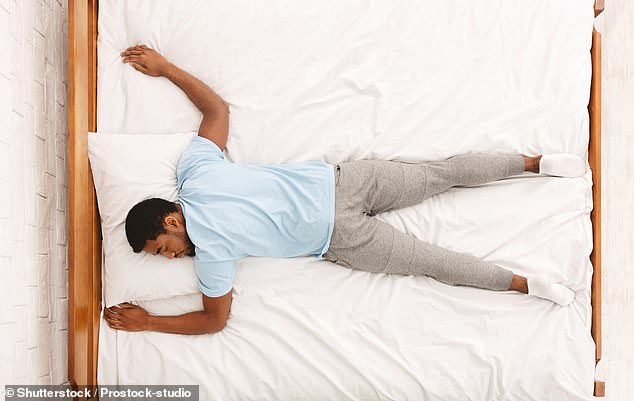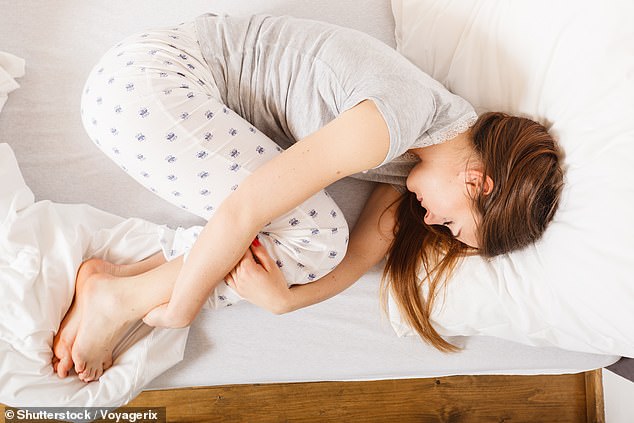World Sleep Day 2024: Experts reveal the worst sleep positions for you – and why you should NEVER snooze face-down
It’s something we all look forward to after a stressful day at work.
But when you get into bed and pull your duvet around you, what position do you naturally gravitate towards?
To celebrate World Sleep Day 2024, experts have revealed the best and worst sleeping positions.
From the ‘Fetus’ to the ‘Soldier’, most people sleep in one of six main positions – and some are much better for us than others.
“While you may not immediately feel uncomfortable in bed, if you regularly wake up with aches and pains or find yourself frequently experiencing disturbed sleep, poor sleeping posture could be the cause,” says Adam Hirst, head of the department. digitally at Woolroom.
From the ‘Fetus’ to the ‘Soldier’, most people sleep in one of six main positions – and some are much better for us than others

People who sleep on their stomachs with their heads turned to one side and their arms wrapped around the pillow are classified as Freefallers (stock image)
With the average Brit sleeping between seven and nine hours every night, it’s no surprise that most of us have a favorite position.
However, there is a clear difference between a comfortable sleeping position and a healthy sleeping position.
‘It’s natural to assume that if we’re comfortable in bed, we should also have the right sleeping position,’ Mr Hirst explains.
“But in reality, if we have a bad sleeping position, we can become accustomed to it over time, leading us to believe that it is the best sleeping position.”
There are six main sleeping positions, which experts have nicknamed Fetus, Log, Soldier, Starfish, Yearner and Freefaller.
The fetus gets its name from a baby’s position in the womb and sees the sleeper curled into a ball while lying on one side.
According to a Study from 2019According to experts at Curtin University, 60 percent of adults spend most of the night in a side-lying position.
If you are a tree sleeper, you also lie on your side, but this time with your arms and legs extended, while Yearners sleep on their sides, but with their arms extended forward.

Sleeping on your stomach can leave you with back and neck pain the next day, according to experts (stock image)
People who prefer to sleep on their backs are generally categorized as Soldiers – those who sleep with their arms at their sides – or Starfish, who have their arms stretched above their heads.
Finally, people who sleep on their stomachs with their heads turned to one side and their arms wrapped around the pillow are classified as Freefallers.
Speaking to MailOnline, Lisa Artis, deputy CEO of The Sleep Charity, explained that all of these features are ‘fine’ – except the Freefaller.
“It’s fine to sleep on your back or side, but we recommend you avoid sleeping on your stomach as this puts a lot of strain on your neck as it is permanently twisted throughout the night,” she explained.
Martin Seeley, sleep expert at MattressNextDay, agreed that sleeping on your stomach is a no-go, and stressed that sleeping on your back is not the best option for people who snore.

The fetus gets its name from a baby’s position in the womb and sees the sleeper curled into a ball while lying on one side
‘Sleeping on your side is considered the best position,’ he told MailOnline.
‘It can help improve circulation and digestion, and also opens the airways for easier breathing, which means less chance of snoring.’
Whatever your job preference, Ms Artis says the right support is ‘crucial’.
‘A good bed can make all the difference to your sleep,’ she told MailOnline.
‘Did you know that your head weighs 4.5 to 5.5 kilos, and that your neck contains seven of the 33 vertebrae of the spine?
‘Neck pain, stiff neck and even persistent headaches can simply be the result of poor pillow support while sleeping in bed.
‘A good pillow should keep your head in the correct position, that is, in the same relationship to your shoulders and spine as if you were standing upright with correct posture.
‘One that is too soft will cause the head to droop and the neck to bend. A lesson that is too hard will give you a neck cramp.’
